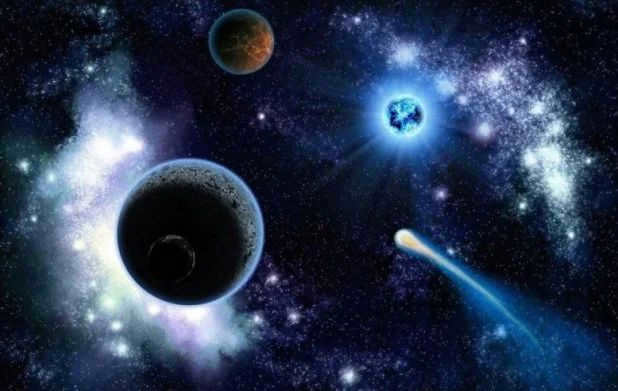
The cosmos is a complete system in which all objects and structures coexist in accordance with specific principles. Only a fraction of the immense cosmic expanse is visible to the naked eye in the form of stars. The universe encompasses a vast realm of galaxies, quasars, as well as dark matter and energy. It encompasses numerous enigmas that the most brilliant scientists worldwide are endeavoring to unravel.

In today’s fast-paced world, simply following the standard school curriculum is no longer sufficient. It is crucial to acquire valuable knowledge about finance and investments in order to secure one’s financial well-being.
Take control of your future and broaden your horizons by gaining comprehensive knowledge and skills in financial literacy. Access FINANCIAL LITERACY online today.

Register now, APPLY FOR YOUR ACHIEVEMENT
The Composition of the Universe and its Dimensions
For countless ages, humanity has held the belief that the cosmos is timeless and unchanging. This concept reigned supreme until the early 20th century. A monumental revolution in the field of celestial science took place in the 1920s, thanks to brilliant minds like Einstein, Friedman, and Hubble. It was these visionaries who postulated and substantiated the notion that the Universe is a cohesive system that undergoes its own evolution and has the capacity to expand or contract over time.
Within the fabric of the Universe, there exist various tiers of organization, each distinguished by the magnitude of its constituent elements:
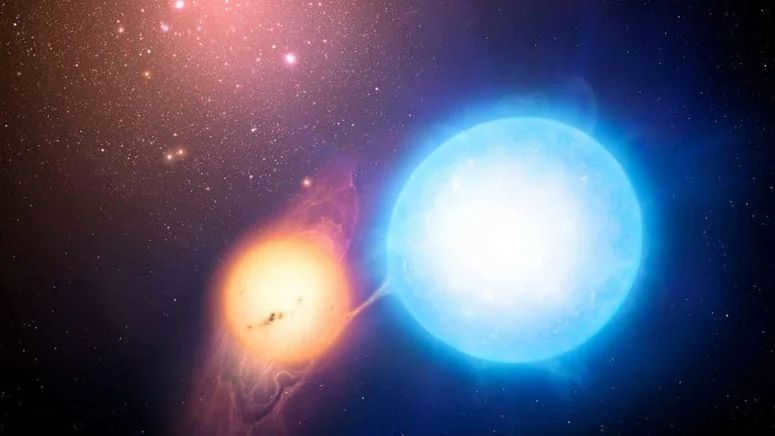
Double star Source
- Galaxies are classified into different shapes such as irregular, lenticular, spiral, and elliptical. However, scientists are still unsure about the reasons behind this classification. Each galaxy contains various elements like black holes, interstellar gas, dark matter, double stars, dust, and electromagnetic radiation. It is believed that there are hundreds of millions of galaxies in the universe.
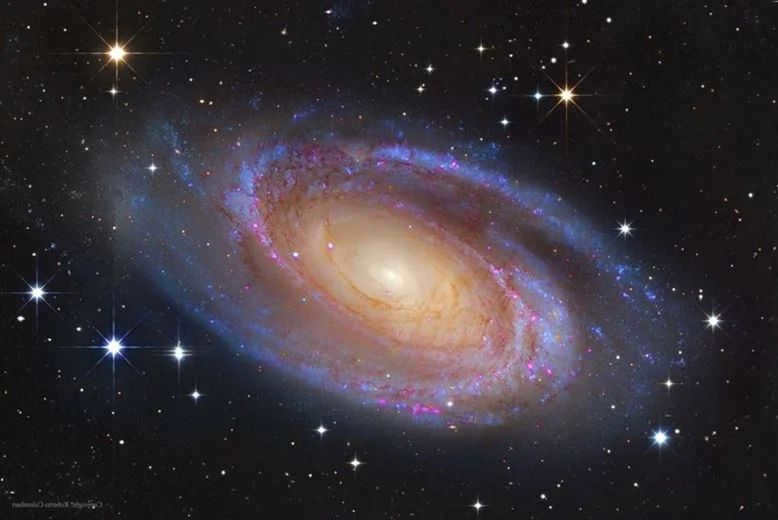
A spiral galaxy is a type of galaxy characterized by a flat, rotating disk with arms that spiral outward from a central hub. These galaxies are often referred to as “spiral nebulae” because of their unique shape. They are one of the most common types of galaxies in the universe.
- The Local Group is a small cluster of galaxies that includes the Milky Way, Triangle and Andromeda, along with 31 other galaxy systems. This cluster is considered to be one of the largest and most stable structures in the universe. The objects in the galaxy cluster system are held together by gravitational force and some other unknown factor that scientists are still trying to understand. It is believed that the gravitational force alone is not enough to maintain the stability of the cluster.
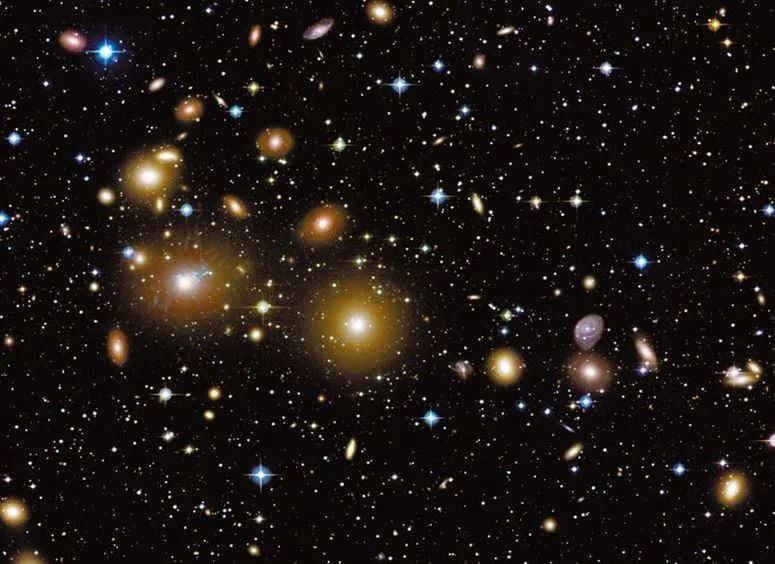
Source of the Perseus galaxy cluster
- A galaxy supercluster is a formation that consists of numerous galactic systems or galaxy clusters, often numbering in the dozens or even hundreds. In this structure, gravitational forces are less intense, allowing the superclusters to move in tandem with the expanding universe.
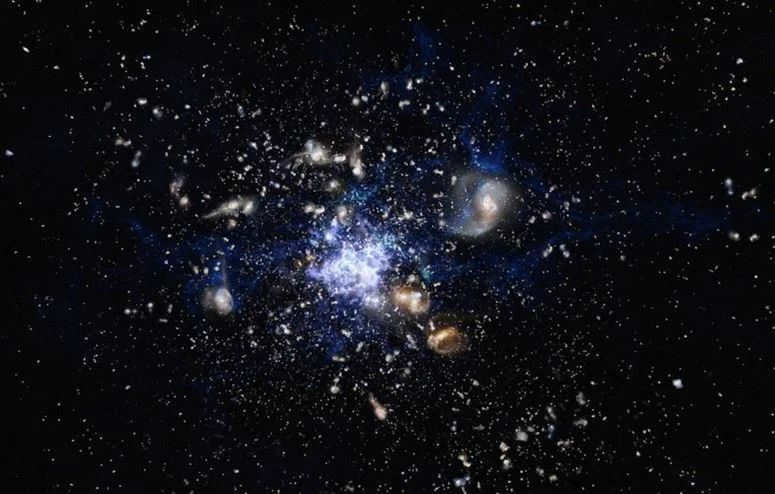
The Volopassus supergroup Source
- Cells or bubbles make up the lowest level in the Universe. These bubbles form the boundaries of superclusters of galaxies. In between these structures, there are empty regions known as voids. Modern telescopes, such as the Hubble telescope, are used to study these voids and the most distant parts of the Universe. Astronomers have been observing space for a long time, studying clusters and the positions of stars. Based on their observations, they make calculations, build models of the universe, create star maps, and more.
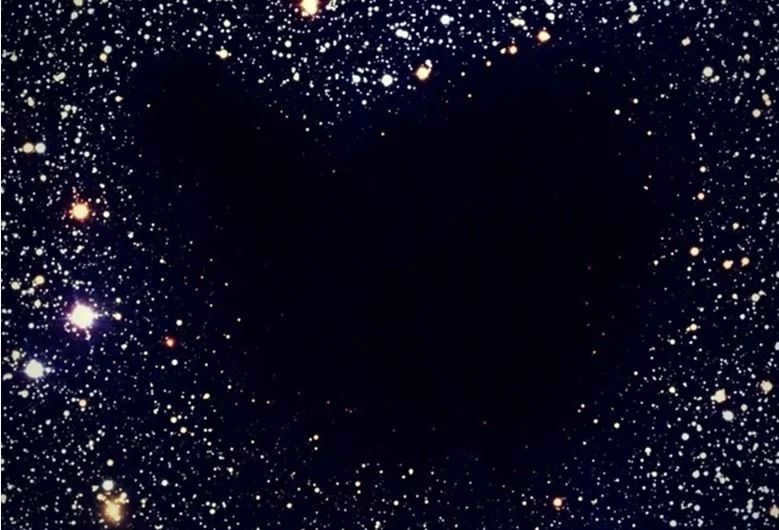
Empty of Volopassus Origin
The entirety of the cosmos is comprised of distinct and enigmatic entities. Humanity has already gained a considerably enhanced comprehension of the mechanics of the extraterrestrial realm. However, with each novel revelation, researchers are faced with fresh inquiries, and the solutions are occasionally elusive.
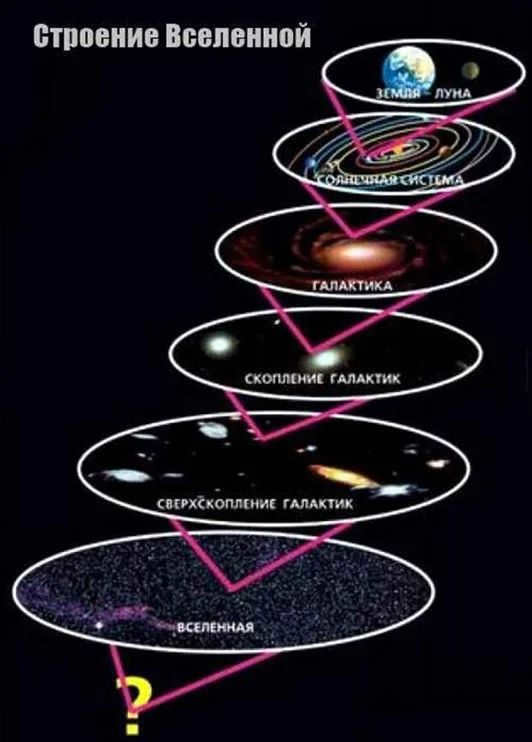
Source
When astronomers examine the dimensions of the Universe, they can solely discuss its observable portion, which is scientifically referred to as the Metagalaxy. As scientists acquire more information and understanding about it, the limits of the Metagalaxy continue to expand in all directions, indicating that the Universe is spherical.
It is widely acknowledged that the age of the Universe is approximately 13.8 billion years. This estimation is derived from extensive research conducted by experts and is based on meticulous observations and calculations. However, it must be emphasized that these conclusions are not absolute certainties, as they are ultimately founded on assumptions about the occurrence of the Big Bang. Nevertheless, the Big Bang theory has gained widespread acceptance due to its ability to elucidate numerous phenomena that transpire in the vast expanse of outer space.
Considering the speed of light, scientists posit that the size of the universe is also approximately 13.8 billion light years. Nonetheless, it is highly probable that this measurement is not entirely precise, owing to the perpetual expansion of the universe since its inception. Certain regions of the universe are expanding at superluminal speeds, thereby ensuring that numerous celestial entities will eternally remain beyond the scope of human observation.
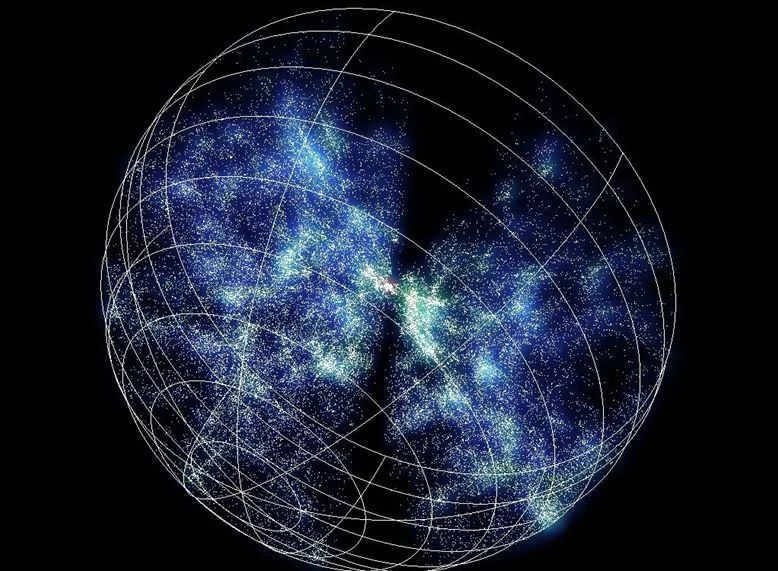

Source of the mathematical model of the Universe
The universe of galactic systems
As previously mentioned, a galaxy is one of the fundamental structures in the Universe. The formation of galactic systems is a natural process that occurs over a significant period of time. It all began with the emergence of protoscaters, which are clouds composed of gas and dust that eventually give rise to star clusters. Dynamic processes within these protoscaters led to the separation of galactic groups. It is well-known that galaxies can have varying shapes, which can be attributed to the different initial conditions of their formation.
In every galactic system, there are two distinct generations of stars. The first generation consists of helium-hydrogen objects that also contain a small amount of heavy metals, making them the oldest stars. The second generation comprises stars that are enriched with heavy metals and are formed from interstellar gas.
The process of star formation takes place during the compression of the galactic system and typically takes around 3 billion years. During this time, a gas cloud transforms into a star system. Through gravitational force, the gas cloud is compressed until the density and temperature in its central part reach specific values, triggering a thermonuclear explosion and the birth of a new star.
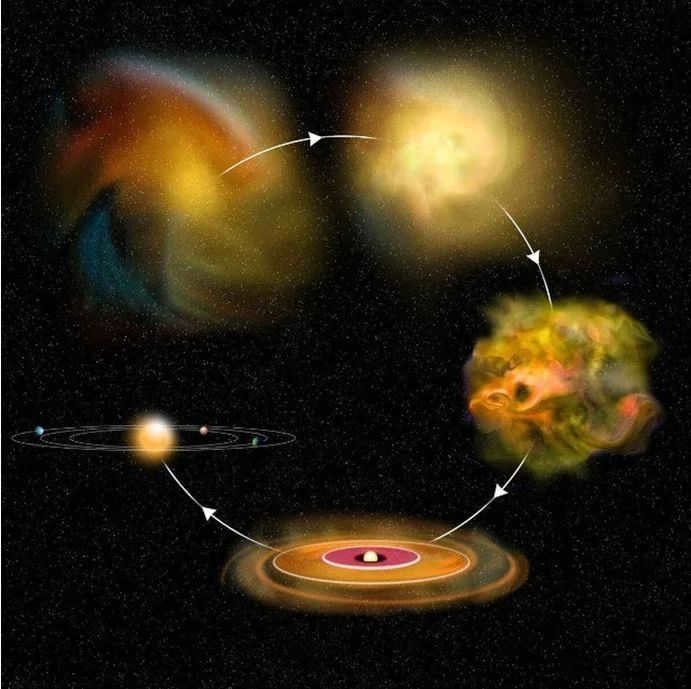
Star formation occurs when a cloud of gas and dust undergoes a specific process. The vastness of the galaxy world poses a challenge for scientists in determining the exact number of these structures in the Universe. Estimates suggest that there are approximately 100 billion galaxies, and their distribution in space is not uniform. The majority, around 95%, form groups, clusters, and superclusters. Within these clusters, there is typically a central elliptical or spiral galaxy that exerts a strong gravitational pull on other satellite galaxies, disrupting their own gravitational fields.
Galaxy Clusters and Superclusters
A galaxy cluster is a large-scale structure in the Universe that consists of numerous galaxies bound together by gravity. It is considered to be the largest known structure in the Universe, with a size ranging from 6 to 60 million light-years. Each cluster typically contains anywhere from 100 to 1000 galaxies. Interestingly, within a cluster, galaxies themselves only make up about 1% of the total mass, while approximately 9% is intergalactic gas, and the remaining majority is composed of dark matter and dark energy. There are two main types of galaxy clusters:
- Regular clusters – These clusters have a spherical shape and are composed mainly of lenticular and elliptical galaxies. These galaxies often have a prominent central region. An example of a regular cluster is Veronica’s Hair.
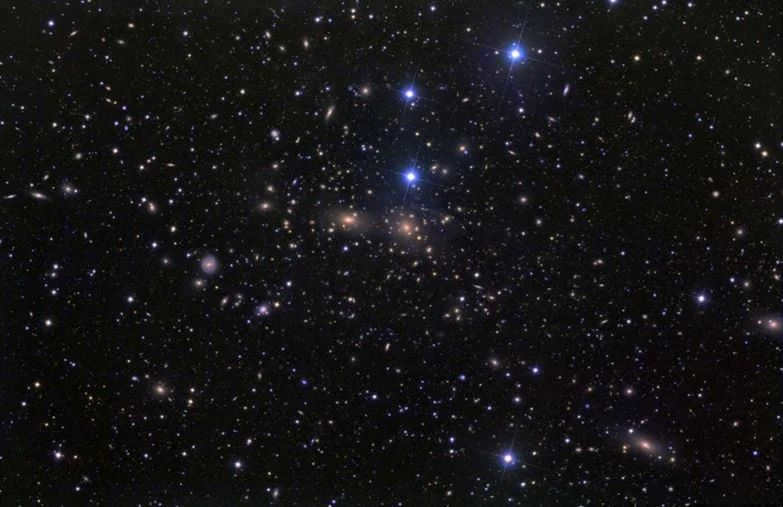
Veronica’s Hair is home to a cluster of galaxies
- One type of galaxy cluster found in Veronica’s Hair is irregular. These clusters have an indeterminate shape and a smaller number of galaxies compared to the regular type. The Virgo cluster is an example of an irregular cluster.
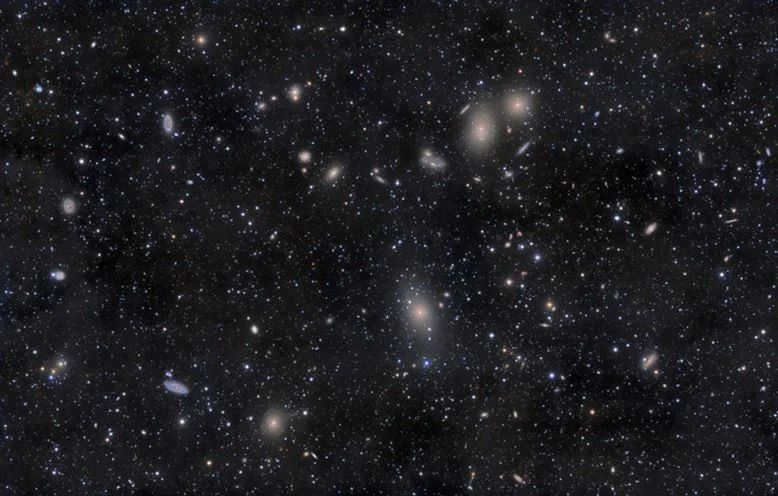
The Virgo cluster of galaxies
A superscale is a structure that contains clusters of galaxies and multiple individual galactic systems. Typically, a superscale consists of 2 to 20 galaxies, which are situated in galactic filaments or at the intersections of these filaments.
The size of galaxy superscales in the Universe can reach hundreds of millions of light-years. This size is so vast that the objects within them are unable to remain bound together by gravitational forces. The most well-known superscales are:
- The Sculptor’s Wall – located near the Milky Way. It spans a length of 300 million light-years and a width of 210 million light-years;
- Virgo – a local supergroup of galaxies that includes the Milky Way;
- Shepley is an immense supercollision that ranks among the largest in the entire Universe. With a mass that is 10,000 times greater than that of the Milky Way, it holds an astonishing weight and significance.
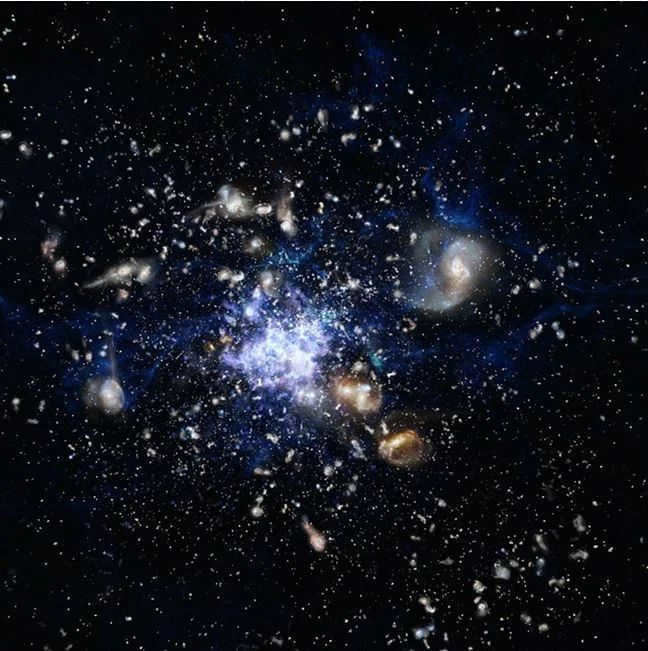

The Shepley supergroup
Quasars
Quasars are the most intriguing and enigmatic objects in the vast expanse of the Universe. Their luminosity can surpass that of entire galaxies. The term “quasar” itself denotes a “stellar-like radio source”. Scientists propose that quasars are active galactic nuclei, a category of galactic systems that deviate from conventional classification.
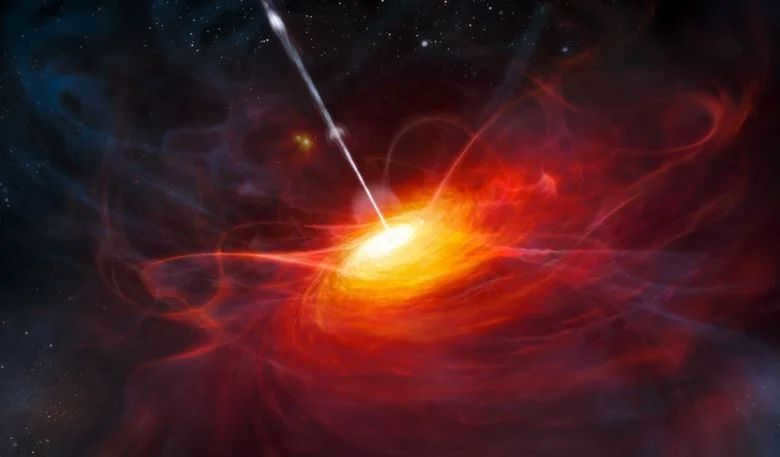
Source
An alternative viewpoint suggests that quasars are massive black holes that actively consume surrounding matter. As matter nears the black hole, its velocity escalates, causing it to heat up. The black hole’s magnetic field gathers the tiniest particles into beams, which then emanate from its poles. Another theory proposes that quasars represent the early stages of galactic formation, allowing mankind to witness their actual emergence. Although the most accurate theory remains uncertain, each hypothesis possesses the validity to coexist.
The power of a quasar’s radiation is incredibly immense. It surpasses the radiation power of all the stars in a single galaxy by hundreds of times. It’s mind-boggling to think that this object is billions of light-years away from us, yet it can still be observed with a regular telescope. In just one unit of time, a quasar produces energy that is 10 trillion times greater than that of the Sun. Furthermore, its size can be likened to that of the entire solar system.
Quasars exist billions of light years away from us. They exhibit a redshift, indicating that these objects are moving away from Earth. What’s more, the speed at which they are moving away is truly extraordinary. Scientists estimate that the quasar 3C196 is moving at a speed of 200,000 km/s (which is two-thirds the speed of light), and it is located a staggering 12 billion light years away. To put this in perspective, the maximum speed of galactic systems is only a few tens of thousands of km/s.
One fascinating aspect of quasars is their variability. They constantly undergo changes in their luminosity, which is completely atypical for galaxies. There was even a case where the luminosity of an object changed 25 times in just one hour. Recent observations have revealed that many quasars are located near the centers of enormous elliptical galaxies.
The discovery of the very first quasar, named 3c273, can be attributed to Matthew Sandidge in 1960. In the present day, quasars in the Universe are identified by the redshift of their spectrum. If such a shift is detected and the object emits an immense amount of energy, it can confidently be classified as a quasar. Currently, there are approximately 2 thousand of these cosmic entities in outer space. The Hubble telescope is instrumental in studying these celestial objects. The closest quasar to Earth is located 800 million light years away.
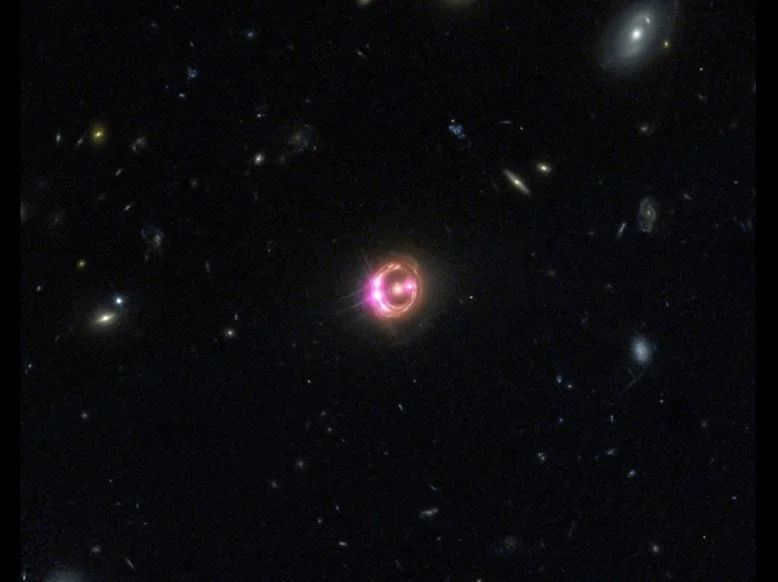
Observing a quasar through a telescope is a fascinating experience.
The concept of mysterious energy
In the field of astronomy, the concept of mysterious energy encompasses an energy source that exists in theory. This energy was incorporated into the mathematical model of the Universe to offer an explanation for its accelerating expansion. Scientists speculate that this energy does not have the ability to form clumps like dark matter, but instead is uniformly spread throughout the vast expanse of the universe. Mysterious energy can be found within galaxies, galactic clusters, and even beyond them. An intriguing aspect of this energy is that it counters the force of gravity, effectively experiencing antigravity.
Thanks to advanced astronomical technologies, scientists have the ability not only to measure the rate at which the universe is expanding, but also to examine how this process has evolved over time. It is worth noting that the acceleration of the universe’s expansion is actually increasing, which suggests the presence of antigravity forces. If gravity behaved conventionally in outer space, the distance between galaxies would gradually decrease.
Astronomers propose the hypothesis that dark energy might be equivalent to a vacuum. Its density remains constant as the universe expands, indicating the possibility of negative pressure. Another theory suggests that dark energy takes the form of an extremely weak field that permeates the entire expanse of the universe, known scientifically as “quintessence”.
Regrettably, up until now there has been no opportunity to experimentally study dark energy under terrestrial circumstances. However, this does not imply that humanity will never be able to comprehend the essence of this phenomenon or uncover other factors that contribute to the remarkable acceleration of the Universe’s expansion.

When you gaze up at the sky on a clear night without the interference of city lights, you are treated to a breathtaking view of the starry expanse above. One prominent feature is a wide, luminous band that stretches across the sky from west to east. This band is actually a collection of countless stars and dazzling nebulae, and it was given the name “Galaxy” by the ancient Greeks. In this lesson, we will explore the structure and dimensions of our Galaxy, as well as the various celestial objects that are a part of it. We will delve into the fascinating world of globular and scattered star clusters, and gain an understanding of how stars navigate their way through the vast expanse of the Galaxy.
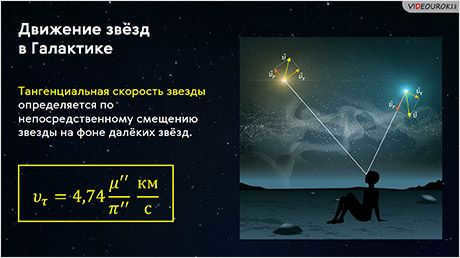
Currently, it is not possible to view or share the instructional video with students
In order to access this and other video lessons included in the package, you will need to add it to your personal account.
Unlock amazing possibilities


Outline of the Lesson “The Movement of Stars in the Milky Way Galaxy”
When you gaze at the night sky on a clear, moonless night, far away from the lights of the city, you are treated to a spectacular view of the stars. One of the most remarkable features is a broad, luminous band that stretches across the sky from west to east. This band is made up of a vast number of stars and dazzling nebulae, and it is known as the Milky Way. The ancient Greeks named it the Galaxy, which means “milky” or “milky”. In modern times, we refer to this band as the Milky Way. It spans both hemispheres along the celestial sphere’s great circle. The central line of the Milky Way is called the galactic equator, and the plane it forms is known as the galactic plane. The galactic plane is inclined at an angle of 63 degrees to the celestial equator.
Back in 1609, Galileo Galilei made an astonishing revelation. He revealed that the Milky Way, which we gaze upon in awe, is not just a simple band of light in the night sky. Instead, it is a magnificent collection of countless faint stars and radiant nebulae. In fact, there are estimated to be about 200-400 billion stars in this cosmic masterpiece. These celestial bodies are all united by the force of gravity, forming what we now know as the galaxy.
However, there is one exception to this galactic harmony. Nestled within the constellation of Andromeda, there is a peculiar nebular spot that stands out from the rest. It takes on the shape of a flickering candle flame and captivates our gaze. This spot, known as the Andromeda Nebula, is not a part of the Milky Way. It exists as a separate entity, a captivating spectacle in its own right.
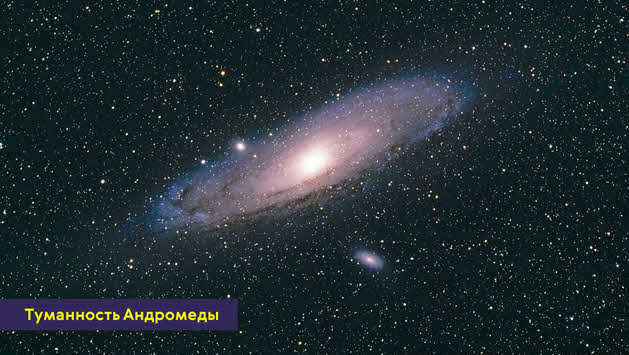
William Herschel was the first person to attempt to construct a model of our Galaxy. In the 1770s, he decided to conduct a selective count of stars in various directions from the galactic equator. His calculations revealed a sharp decrease in the number of stars on both sides of the galactic plane. Based on this, he proposed a hypothesis that the Milky Way consisted of a finite-sized disk-shaped system composed of both brighter and fainter stars.
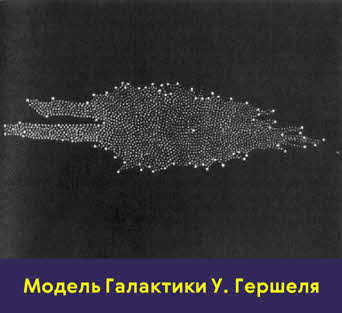
In 1923, a number of brilliant Cepheids were identified within the Andromeda Nebula. As a reminder, Cepheids are a vast group of luminous pulsating variable stars, consisting of supergiants and giants of the F and G classes. They serve as unique “guiding lights” in the cosmos, as their absolute stellar magnitude can be determined based on their observed pulsation period. By comparing the absolute stellar magnitude of a Cepheid with its apparent stellar magnitude, we can calculate its distance.
Consequently, it was revealed that the Andromeda Nebula is positioned at a distance of slightly over two million light years from us. This led scientists to hypothesize that it is not just a nebula, but rather another star system akin to our own.
Additional examination of identified nebulae revealed that each of them is a vast distant assemblage encompassing millions or even billions of stars. These colossal clusters of stars and interstellar material situated beyond our own galaxy have become known as galaxies. By comparing them to our own star system, numerous characteristics of its composition have been uncovered.
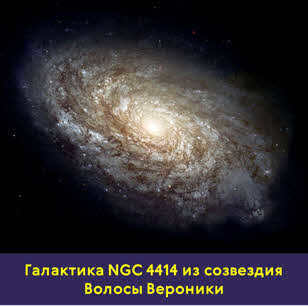
As per the latest understanding, our Milky Way galaxy takes the form of a flat, lens-shaped disk. It spans approximately 30 kiloparsecs in diameter and has a thickness of around 4 kiloparsecs. The stellar disk of the galaxy exhibits a spiral structure with arms. The disk also features a noticeable thickening known as the bulge, situated in its center. Concealed within dense gas, dust clouds, and stars, the core of the galaxy remains hidden from our view.
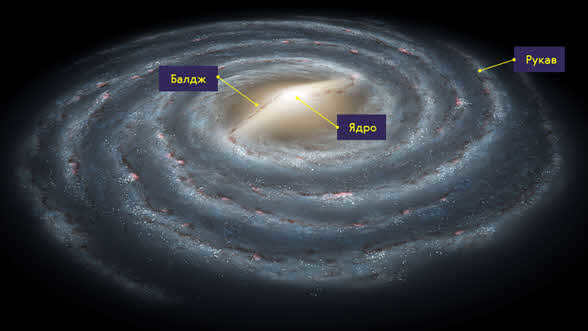
The central region of our galaxy contains a dense object, most likely a supermassive black hole, surrounded by a cloud of hot gas that emits radio waves. This gas cloud has a diameter of less than 1.8 parsecs. According to some calculations, the mass of the galactic nucleus is 4.31 × 10^6 times the mass of the Sun.
Not all stars in our galaxy are part of the flat disk structure. There is also a spherical component called the stellar halo. The stellar halo is made up of very old stars, as well as sparse hot gas and dark matter. It has a spherical shape and extends beyond the galaxy for a distance of 5-10 thousand light-years.
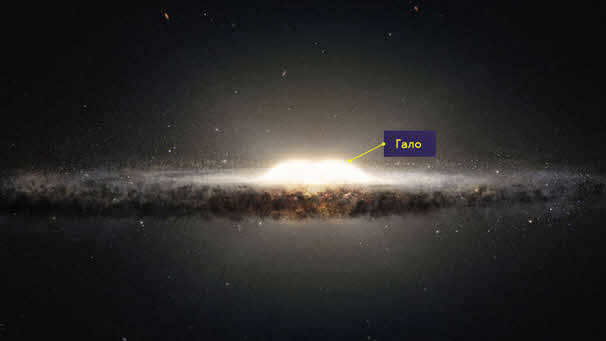
The estimated mass of the entire Milky Way is approximately 500 billion times the mass of our Sun.
By studying the stars in our galaxy, scientists have discovered a wide range of ages. Some stars are very young, only about 100 thousand years old, while others are as old as the Milky Way itself, which is 13.2 billion years old.
Star clusters are the main structural components of our galaxy. These clusters are groups of stars that are bound together by gravity and move through the galaxy as a single unit.
There are two main types of star clusters: scattered and globular clusters.
A scattered star cluster is a loosely formed group of stars that have a similar age and were formed from a single molecular cloud. These clusters can contain anywhere from a few tens to several thousand stars and have an irregular shape.
Our Galaxy has revealed the presence of over 1100 scattered clusters in the vicinity of the galactic center. However, it is believed that there could be numerous other clusters yet to be discovered. These scattered clusters, predominantly comprised of blue-white main-sequence stars, have an average age of several hundred million years.
Among the most renowned scattered clusters that can be observed without the aid of a telescope are the Pleiades, the Hyades, and the Alpha Perseus Cluster.
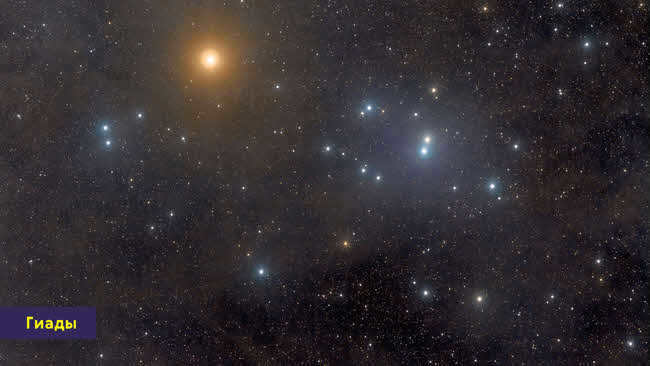
A cluster of stars known as a globular cluster contains up to a million stars that are bound together by the force of gravity. These clusters have a symmetrical spherical shape and are characterized by a higher concentration of stars towards the center.
Globular clusters are found in the outer regions of galaxies, including our own Milky Way. They are particularly concentrated towards the center of the galaxy. Currently, scientists have discovered 158 globular clusters. These clusters are composed of older stars, including red giants and supergiants. The age of globular clusters can be as old as 11-13 billion years.
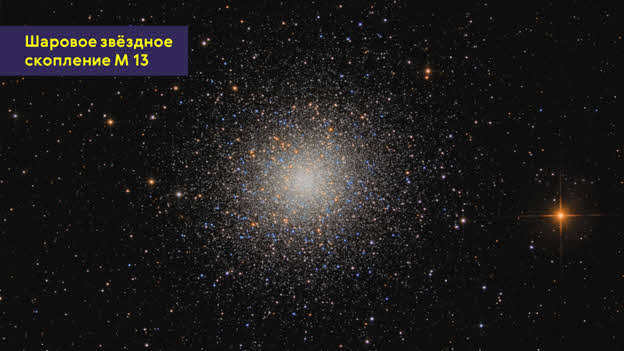
In June 2011, a new type of clusters in the Lyra constellation (NGC 6791) was discovered, combining characteristics from both globular and open clusters.
Clusters of stars that are not strongly bound by gravity, or young stars that have a shared origin, are referred to as stellar associations.
Therefore, the presence of star clusters and associations of different ages in the Galaxy suggests that stars are not formed in isolation, but rather in groups, and the process of star formation continues to occur today.
It is common knowledge that for an extended period of time, the stars that could be seen in the sky were believed to be motionless entities. However, in 1718, an astronomer named Edmund Halley from England took it upon himself to compare the positions of the stars during his time with those documented in Hipparchus’ catalog from the 2nd century BC. To his astonishment, Halley discovered that the prominent stars Sirius and Procyon had shifted by approximately 0.7 degrees. Furthermore, the displacement for Arcturus was even greater, surpassing 1 degree.
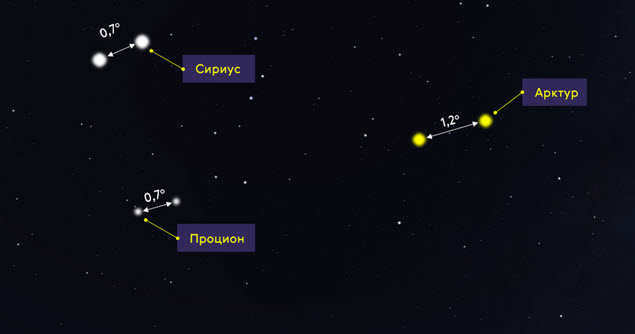
Halley formulated a hypothesis based on the data, suggesting that the stars exhibited movement in relation to the Sun. The velocity at which a star moves through space in relation to the Sun is referred to as the spatial velocity. This spatial velocity is typically oriented at an angle relative to the observer’s line of sight.
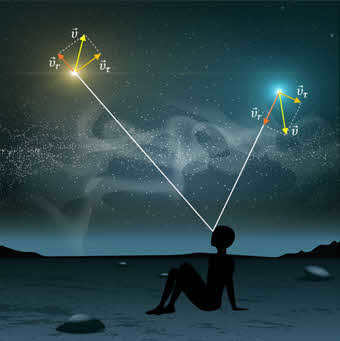
Let’s break down the spatial velocity into two parts: one in the direction of the line of sight (radial velocity) and the other perpendicular to the line of sight (tangential velocity).
Their magnitudes can be related to each other by the following equation:
The star’s velocity along the line of sight is determined by the Doppler effect – the shift in its spectrum lines:
The tangential component is determined by the star’s actual motion against the backdrop of distant stars:

In this equation, μ represents the proper motion of the star, which is the apparent angular displacement per year relative to faint distant stars.
For instance, let’s calculate the tangential and spatial velocity of Altair given its annual parallax of 0.198''. The star’s proper motion is 0.658'' and its radial velocity is -26.3 km/s. (The negative sign indicates that the star is moving towards us).
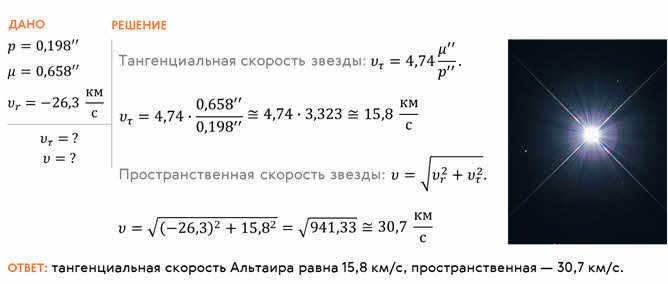
Currently, the displacements of stars are determined through photographs taken of the same portion of the sky at intervals of several years or even decades. However, even in these cases, the majority of stars exhibit minimal displacement. Special microscopes are used to measure and determine these small movements. Over tens of thousands of years, the proper motions of stars significantly impact their positions, resulting in changes to the familiar formations of constellations.
The examination of stars’ inherent motions led to the identification of our Sun’s movement. It was discovered that the Sun is traveling towards a point within the Hercules constellation at a speed of approximately 19.4 km/s. This specific point is referred to as the Sun’s apex. Correspondingly, the point located diametrically opposite to it is known as the anti-apex.

This video lesson will cover the composition and dimensions of our Galaxy. We will explore the constituents of the Milky Way and delve into the characteristics of globular and dispersed star clusters. Additionally, we will investigate the motion of stars within the Galaxy.
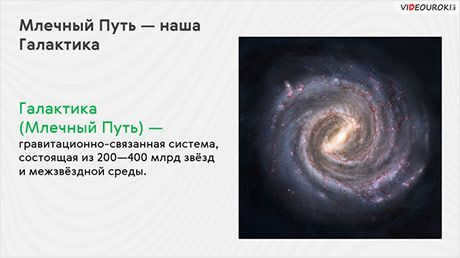
Currently, it is not possible to view or share the instructional video with students
In order to access this and other instructional videos included in the package, you must add it to your personal account.
Unlock amazing functionalities


Outline of the lesson titled “Our Galaxy: The Milky Way”.
When you gaze at the heavens on a clear night without the moon, far from the lights of the city, you can behold the magnificent starry sky. One prominent feature is a broad strip of light that spans the entire sky from west to east. This celestial band was named the Milky Way by the ancient Greeks, a term that signifies a milky appearance. According to legend, Zeus desired to grant his son Heracles, who was born to a mortal woman, immortality. To accomplish this, Zeus presented the sleeping Hera with the child so that he could drink her divine milk. Upon awakening, Hera realized she was nursing a child that was not her own and pushed him away. The resulting stream of milk that sprayed from the goddess’s breast formed the Milky Way, which extends like a silvery streak across both hemispheres on the celestial sphere’s grand circle, ultimately forming a ring of stars.
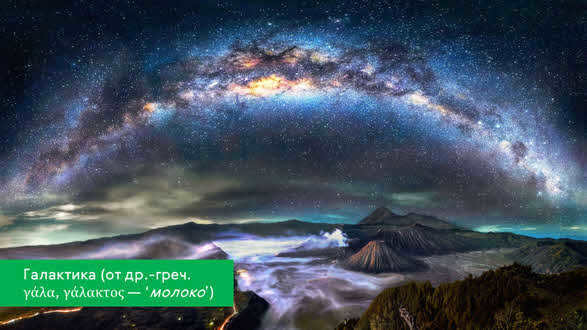
There are numerous alternative designations for the Milky Way in different languages. However, the term “path” often persists, while the term “milky” is substituted with alternative descriptors. For instance, in Arabic, the Milky Way is referred to as a path of flour, which is said to have been created by flour spilling from a perforated sack on a cart. Similarly, the Cheyenne Indians believed that the Milky Way is comprised of mud and silt raised by the belly of a turtle floating in the sky.
In 1609, Galileo Galilei made the discovery that the Milky Way is a conglomerate of an immense number of faint stars (approximately 200-400 billion) and luminous nebulae. Collectively, they form an enormous gravitationally bound system of celestial bodies. The Galaxy.
In the region of the Milky Way, the presence of interstellar dust poses limitations on optical observations, making it difficult to study the structure of the Galaxy and accurately determine its shape. However, advancements in measuring the distances to stars have allowed researchers to make progress in understanding their distribution in space and, consequently, the structure of the Galaxy.
One of the first attempts to model our Galaxy was made by William Herschel in the 18th century. He decided to conduct a selective count of stars in different directions from the galactic equator. To quantify the number of stars in various parts of the Galaxy, he introduced the concept of stellar density, which can be thought of as the concentration of stars in a given volume, similar to the concentration of molecules. Stellar density is defined as the number of stars per cubic parsec.
The most straightforward method of determining stellar density was in the immediate vicinity of the Sun, as accurate annual parallax values are available for all stars near our solar system. Consequently, the calculations yielded a stellar density of approximately 0.12 stars per cubic parsec in the vicinity of the Sun. This implies that each star occupies an average volume exceeding 8 cubic parsecs. Furthermore, the average distance between stars was determined to be nearly 2 parsecs.

Afterwards, Hershil made a decision to investigate the variation in stellar density in different directions. To accomplish this, he tallied the quantity of stars per square degree in different regions of the celestial sphere. The initial observation that the scientist made was that the concentration of stars significantly increases as we approach the Milky Way’s band, which forms a prominent circle in the sky. Conversely, as one moves towards the pole of this circle, the density of stars declines rapidly.
Subsequently, he proposed that the dim stars within the Milky Way, in conjunction with the brighter stars, compose a single stellar system that resembles a disk of limited dimensions. Moreover, the Sun is likely to be situated close to the plane of symmetry of this structure.
In 1923, a group of scientists made a remarkable discovery in the Andromeda Nebula. They found numerous brilliant Cepheids, which belong to a vast category of pulsating variable stars. These stars are known as supergiants and giants, and they can be classified into the F and G classes. Cepheids have earned the nickname of “beacons” in the realm of astronomy due to their unique properties. One such property is that the absolute stellar magnitude of Cepheids can be determined by their pulsation period, which can be measured through observations. By comparing the absolute stellar magnitude of a Cepheid with its apparent stellar magnitude, scientists can accurately calculate its distance from Earth.
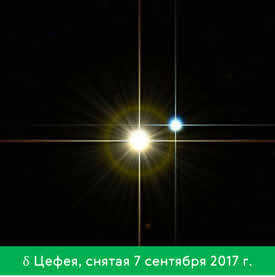
Therefore, the identification of the Cepheids within the Andromeda Nebula provided evidence suggesting that its distance exceeded two million light years. Consequently, this observation strongly implied that the Andromeda Nebula represents an alternate stellar system akin to our own.
Additional examination of recognized nebulae demonstrated that each of these celestial bodies similarly constitutes enormous remote star systems. These immense conglomerates, which consist of stars and interstellar matter gravitationally bound together beyond the confines of our galaxy, are commonly referred to as galaxies. By comparing these structures with our own star system, scientists have managed to glean numerous insights into its composition and arrangement.
Based on contemporary models, our Milky Way galaxy is characterized as a flat, lens-shaped disk. It spans approximately 30 kiloparsecs in diameter and has a thickness of approximately 4 kiloparsecs. Precisely determining the exact size of the galaxy is challenging due to the gradual decrease in stellar density as one moves away from its center, without any distinct boundary. The Sun occupies a position near the galactic plane, situated about 20-25 parsecs away in a northern direction.
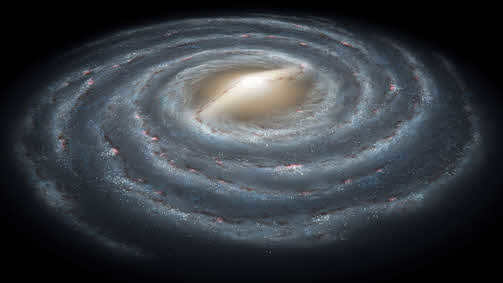
The Milky Way galaxy possesses a distinctive arrangement known as spiral arms within its stellar disk. Positioned at the heart of our galaxy is a significant region referred to as the galactic center. Nestled within this central region lies the galactic bulge, a spherical formation comprised primarily of orange and red stars. Analogously, the structure of our galaxy can be likened to two fried eggs with the yolks facing outward; the egg whites correspond to the galactic disk, while the yolks, forming a spherical configuration, represent the central bulge within the disk.
The core of the galaxy is located at its nucleus. The nucleus is composed of a supermassive black hole called Sagittarius A* and is surrounded by a hot gas cloud that emits radio waves. This gas cloud has a diameter of 1.8 pc. Some calculations suggest that the mass of the galactic core is 4.31 x 10^6 times greater than the mass of the Sun.
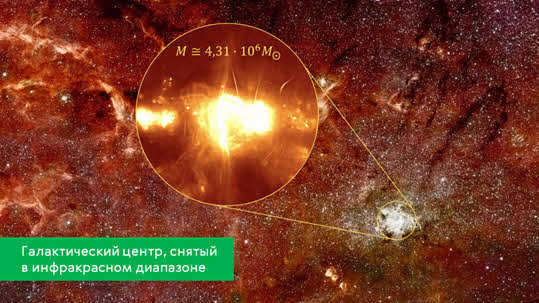
Some stars in our Galaxy are not part of the disk, but instead make up the stellar halo. The stellar halo is comprised primarily of ancient stars, sparse hot gas, and dark matter. The halo extends beyond the Galaxy by approximately 5-10 thousand light-years. The total mass of the Galaxy is estimated to be around half a trillion solar masses. The examination of stars in our star system has revealed the presence of both very young stars (approximately 100 thousand years old) and very old stars, whose age is comparable to that of the Galaxy itself (13.2 billion years).
Several stars come together to form star clusters. Star clusters are groups of stars that are gravitationally bound and share a common origin, moving within the gravitational field of the Galaxy as one cohesive unit.
There are typically two categories of star clusters based on their appearance: scattered clusters and globular clusters.
A scattered star cluster is a loosely formed group that has an irregular shape and contains a varying number of stars, ranging from a few tens to a few thousand. It is believed that the stars in these clusters form from a single giant molecular cloud and have a similar age.
There have been over 1100 scattered clusters discovered near the center of our Galaxy, but it is possible that there are even more. These clusters are estimated to have an average age of a few hundred million years and consist mainly of blue-white main-sequence stars.
Some of the most well-known scattered clusters that can be seen with the naked eye include the Pleiades, the Hyades, the globular cluster in Hercules, and the Alpha Perseus Cluster.
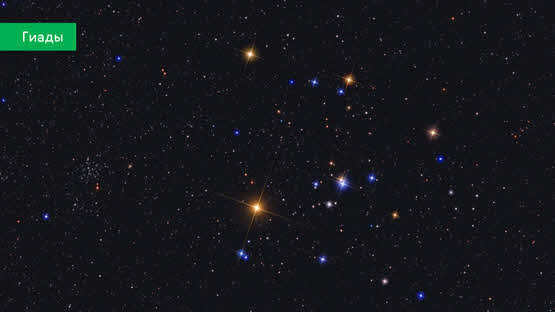
A globular cluster refers to a star cluster that contains a large number of stars, typically up to a million, which are held together tightly by the force of gravity. These clusters have a symmetrical spherical shape and are known for having an increasing concentration of stars towards their center.
In contrast to dispersed star clusters that are found within the disk of a galaxy, globular clusters are located in the halo. The stellar population within globular clusters consists of stars that have undergone significant evolution, such as red giants and supergiants. Furthermore, globular clusters can have an age of up to 11-13 billion years.
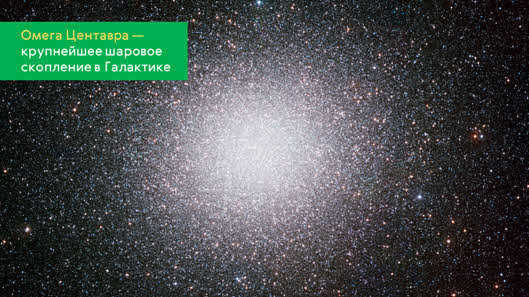
By the beginning of 2020, the number of known globular clusters stands at 158. Additionally, there are approximately 20 clusters that are being considered as potential globular clusters.
Star groupings that are not held together by gravitational forces, or young stars that are weakly bound together through a common origin, are referred to as stellar associations. These were initially observed by Soviet astrophysicist Victor Amazaspovich Ambartsumian in 1948. In contrast to scattered young star clusters, stellar associations are larger and have a lower density.
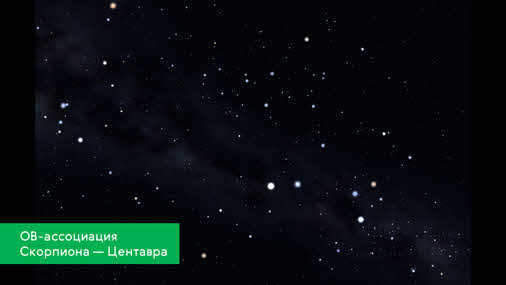
Consequently, the presence of various star clusters and associations in the Milky Way suggests that stars are not created in isolation, but rather in collectives, and the phenomenon of star formation is an ongoing process.
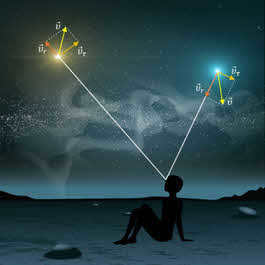
At present, star displacements are determined based on photographs taken of the same section of the sky at different intervals, ranging from a few years to even several decades. However, even in these cases, the majority of stars exhibit only minimal displacements. Nevertheless, over tens of thousands of years, the proper motions of stars have a significant impact on their positions, resulting in the shifting outlines of constellations that we are familiar with.
Investigating the proper motions of stars has led to the discovery of our Sun’s movement. It has been observed that the Sun is moving towards a specific point in the constellation Hercules at a speed of 19.4 km/s. This particular point is referred to as the Sun’s apex. Conversely, the point diametrically opposite to it is known as the anti-apex.
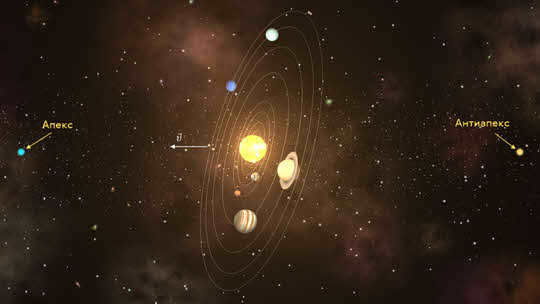
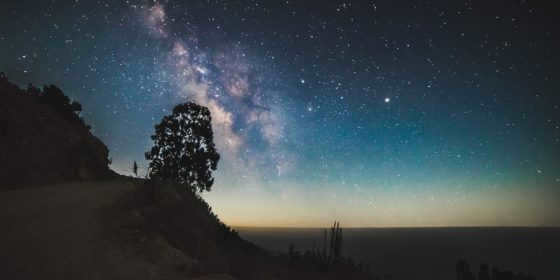
According to astronomers, it is estimated that approximately 4.5 thousand stars are visible to the naked eye. This is quite astounding considering that we are only able to see a fraction of the immense beauty and wonder that the universe has to offer. For instance, within our very own Milky Way Galaxy, there are believed to be over two hundred billion celestial bodies, yet scientists have only been able to observe around two billion of them.
Essential details regarding the Galaxy
The Galaxy is classified as a spiral-type star system with a lintel, an enormous gravitationally bound structure in the expanse of space. It is part of the Virgo Supergroup, along with the nearby Andromeda and Triangle galaxies, as well as over forty dwarf companion galaxies.
Having thrived for over 13 billion years, the Galaxy has given birth to a staggering number of 200 to 400 billion stars and constellations, as well as over a thousand colossal gas clouds, clusters, and nebulae. By examining a Universe map, one can observe the Galaxy depicted as a disk measuring 30 thousand parsecs in diameter (1 parsec equals 3.086*10 to the 13th degree of kilometers), with an average thickness of approximately one thousand light-years (one light-year is nearly 10 trillion kilometers).
Astronomers face a challenging task when trying to determine the precise weight of the Galaxy. The majority of its weight is not concentrated within the constellations as previously believed, but rather in the form of dark matter. Dark matter does not emit or interact with electromagnetic radiation, making it difficult to measure. Based on rough approximations, the weight of the Galaxy is estimated to range between 5*10^11 and 3*10^12 solar masses.
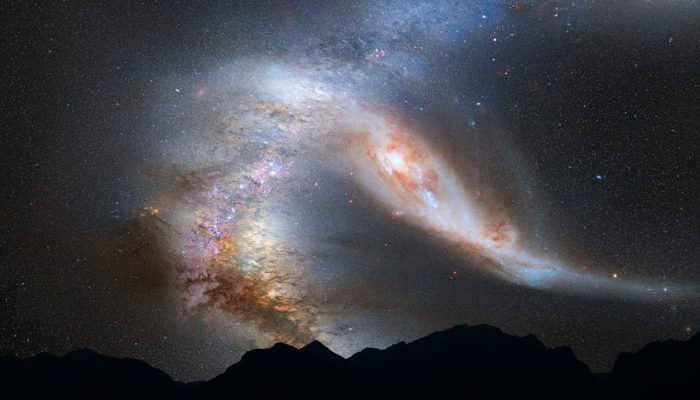
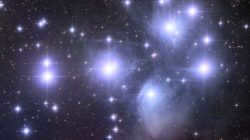
Characterizing the most remarkable stars 11114 4.88 4
Similar to all celestial entities, the Milky Way rotates on its axis and traverses the cosmos. It is important to note that during its movement, galaxies frequently collide with one another in space, with the larger one assimilating the smaller ones. However, if their sizes are equal, active star formation commences after the collision.
Therefore, astronomers propose that in 4 billion years, the Milky Way will collide with the Andromeda Galaxy in the Universe (they are converging at a velocity of 112 km/s), leading to the emergence of novel constellations in the Universe.
Regarding its rotational motion, the Milky Way moves in an uneven and even chaotic manner in space, as each star system, cloud, or nebula within it possesses its own velocity and orbits of various types and shapes.
Galaxy Structure
When examining a space map closely, one can observe that the Milky Way is highly condensed in a flattened shape resembling a “flying saucer” (with our solar system situated near the outer rim of this stellar system). The Milky Way Galaxy comprises a core, a bulge, a disk, spiral arms, and a halo.
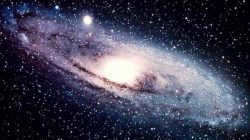
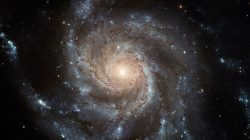
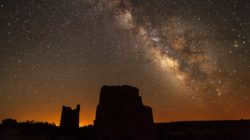
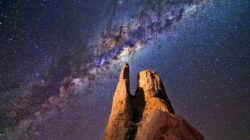
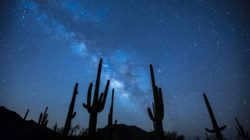
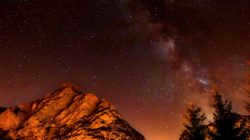

The core is situated in the Sagittarius constellation, where the origin of non-thermal radiation can be found, exhibiting a temperature of approximately ten million degrees Celsius, a phenomenon unique to galactic nuclei. At the heart of the core lies a bulge, comprised of a vast array of elderly stars moving in an elongated orbit, with many nearing the end of their life cycle.
Henceforth, a region measuring 12 by 12 parsecs, housing deceased and dying constellations, was unearthed by American astronomers in this vicinity.
At the heart of the core lies a supermassive black hole, a region in space where gravity is so intense that even light cannot escape. Revolving around it is a smaller black hole. Together, they have a strong gravitational pull on the nearby stars and constellations, causing them to move in unusual trajectories compared to other celestial bodies in the Universe.
The center of the Milky Way also has an incredibly high concentration of stars, much closer together than at the outer edges. The speed at which these stars move is largely independent of their distance from the core, resulting in an average rotation speed ranging from 210 to 250 km/s.
The 27,000 light-year jumper traverses the central region of the Galaxy, deviating at a 44-degree angle from the traditional trajectory connecting the Sun and the Milky Way’s core. Its composition primarily comprises ancient red stars (approximately 22 million in total) and is encircled by a gaseous ring that harbors the majority of molecular hydrogen, making it the prime location for prolific star formation. As per a specific hypothesis, this junction facilitates the passage of gas, giving rise to the birth of constellations.
A disk
The Milky Way is a celestial body composed of constellations, gas nebulae, and dust, forming a vast disk shape. Its diameter spans approximately 100,000 light years, while its thickness extends over several thousand light years. This disk exhibits a significantly faster rotation compared to the corona, which is located at the outer regions of the Galaxy. The speed of rotation varies chaotically at different distances from the core, ranging from zero at the core to 250 km/h at a distance of 2,000 light years from it. Gas clouds, young stars, and constellations are densely concentrated near the disk’s plane.
At the periphery of the Milky Way, there exist concentric layers of atomic hydrogen that extend into outermost spirals up to one and a half thousand light years. Despite being ten times denser than the hydrogen found in the Galaxy’s center, the density of this outer hydrogen is significantly lower. Researchers have recently identified densely packed gas clusters on the outskirts of the Milky Way, measuring several thousand light-years in size, and boasting temperatures of 10,000 degrees Celsius.
Spiral arms
Located just beyond the gas ring, the Galaxy boasts five prominent spiral arms, each with a size ranging from 3 to 4,500 parsecs. These arms are named Swan, Perseus, Orion, Sagittarius, and Centauri (with the Sun positioned on the inner side of the Orion arm). However, the distribution of molecular gas within these arms is uneven and often deviates from the rotational patterns of the Galaxy, leading to inaccuracies.
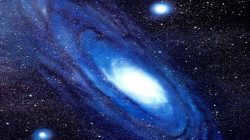
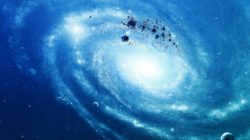
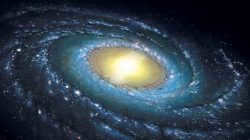
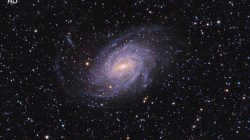

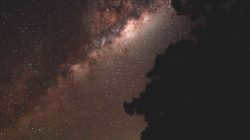

Corona
The corona of the Milky Way is depicted as a spherical halo that stretches into space for five to ten light-years beyond the Galaxy. Comprising of globular clusters, constellations, individual stars (mainly older and low-mass stars), dwarf galaxies, and hot gas, the corona exhibits rotational motion with elongated orbits around the nucleus. Some stars within the corona exhibit erratic rotation, leading to significant variations in the speeds of nearby stars and an overall slow rotation of the corona.
One hypothesis suggests that the corona formed as a result of the Milky Way absorbing smaller galaxies, making it their remnants. Preliminary data suggests that the age of the corona exceeds twelve billion years, matching the age of the Milky Way, indicating that star formation within the corona has ceased.
Exploring the Vastness of Outer Space
When gazing up at the breathtaking night sky, one can catch a glimpse of the magnificent Milky Way, which stretches across the entire globe as a mesmerizing ribbon of luminous celestial bodies (as our solar system resides within the Orion arm, only a fraction of the galaxy is visible to us).

Fascinating information about our star 11114 5 20
The representation of the Milky Way reveals that our Sun is situated near the periphery of the Galaxy’s disk and its distance from the nucleus ranges from 26-28 thousand light years. Notably, the Sun is in constant motion, traveling at an approximate velocity of 240 km/h. To complete a single revolution, it takes around 200 million years, meaning that throughout its existence, our star has yet to complete a full orbit around the Galaxy (in fact, it would need to do so thirty times).
Fascinatingly, our planet is positioned within the corotational circle, a region where the rotational speed of stars aligns with the rotational speed of the arms. Consequently, stars within this circle never depart from or enter into these arms. This circle is characterized by a heightened level of radiation, leading to the belief that life can only emerge on planets with minimal star presence in close proximity.
He then proposed the idea of merging the dimmest stars in our galaxy with the brightest stars to create a singular disk system of limited size. As a result, the Sun would be positioned near the symmetry level of this configuration.
What constitutes a galaxy and the various types it can be
When individuals gaze up at the night sky, they witness the captivating radiance emitted by billions of stars. Some of these stars are a part of our very own galaxy—the Milky Way. Nevertheless, there exist numerous star clusters that extend beyond the boundaries of our galaxy, situated millions of light years away. By examining these clusters, we can gain a better understanding of the origins and expanse of the Universe.
Galaxies are massive structures composed of stars, interstellar gas, star clusters, dust, and dark matter, all held together by the force of gravity. As the largest objects in the Universe, all components within these systems undergo motion around a shared center. Experts believe that there are at least three trillion of these cosmic formations, each situated at a considerable distance from our planet.
Among the galaxies that can be readily observed in the night sky without the aid of telescopes are the Andromeda Galaxy, the Large and Small Magellanic Clouds, and M33.
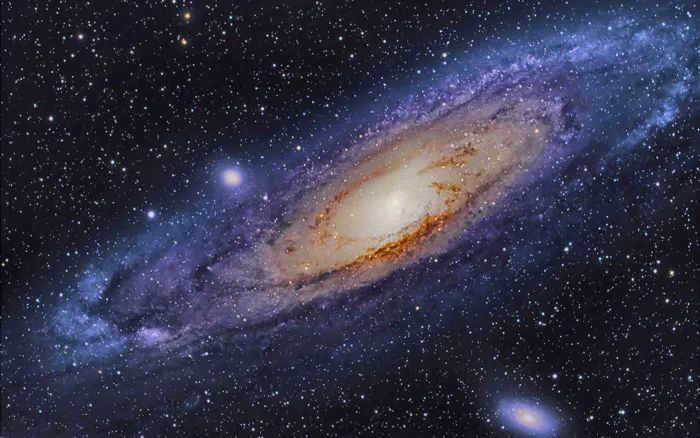
Creation and structural components
The term “galaxy” comes from the ancient Greek word meaning “milky ring.” Scientists believe that galaxies formed approximately 150 million years after the occurrence of the Big Bang. It is challenging to determine the exact age of galaxies because their formation process can extend from one to two billion years.
Star systems are not uniformly distributed throughout the Universe. Some areas contain clusters of star systems, while others have a sparser formation.
Determining the precise size of galaxies is a complex task due to the absence of distinct boundaries. As one moves farther away from the center, the brightness of stars diminishes. Consequently, the peripheral bands may not be within the field of view of telescopes.
A galaxy typically consists of one to ten clusters. As an illustration, the galaxy we inhabit, which encompasses our solar system, is part of the Local Group. Singular galaxies are exceedingly uncommon and typically exist in pairs, trios, or larger formations.
The entities within a galaxy differ in terms of mass, origin, and chemical composition.
For thousands of years, humans have been actively researching the Sun, Moon, asteroids, comets, and other celestial objects.
Throughout the Middle Ages, prominent scientists such as Galileo Galilei, William Herschel, and Charles Messier observed and documented numerous nebulae in the sky, yet their true nature and structure remained a mystery.
It wasn’t until the early 1920s, when the first long exposure photographs of the night sky were captured, that the study of galaxies and their various types became possible. It was later discovered that the luminosity originates from beyond our own galaxy.
Following that, research into the study of galaxies continued in various countries around the world. In the Soviet Union, this was undertaken by B. A. Vorontsov-Vel’yaminov, while in the United States it was carried out by F. Zwicky and others. After the launch of the Hubble Space Telescope in 1990, fascinating discoveries about galaxies were made, sparking a new era of extragalactic astronomy. As time went on, detailed atlases and lists of cluster coordinates were compiled.
Modern telescopes have the ability to observe objects millions of light years away from Earth. Distances are primarily determined through photometry, which relies on objects with known luminosity properties as reference points for observations.
The number of galaxies in existence is simply incalculable. Astronomers approximate that there are approximately 100 billion or even more. The distribution in outer space is not evenly spread out. In certain regions, there may be an enormous quantity, while in others, there may only be a few.
Arrangement
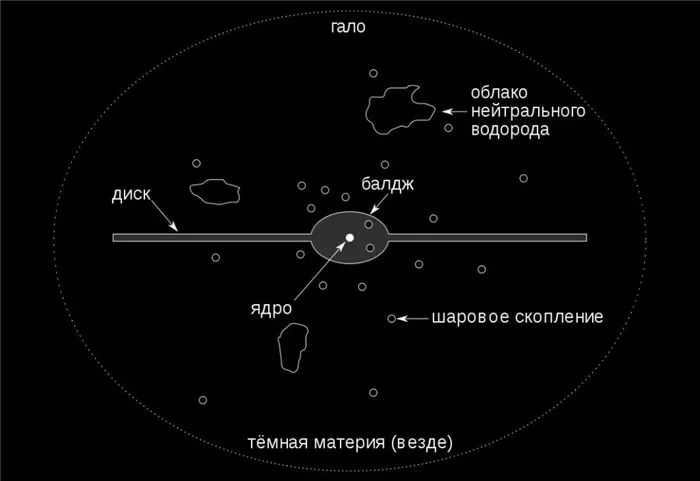
- The nucleus is typically associated with active nuclei found at the very center. The cores of galaxies house massive black holes.
- The disk is a thin layer that contains the highest concentration of galactic objects such as stars, gas, and dust.
- The bulge, also known as the bright inner part in the center, is literally referred to as “bloating”.
- The halo is the outer spheroidal component that has no clear boundary with the bulge.
- A spiral arm is a dense structure composed of young stars and interstellar gas.
- A bar is an elongated formation consisting of interstellar gas and stars that acts as an intermediate layer.
Categories of galaxies
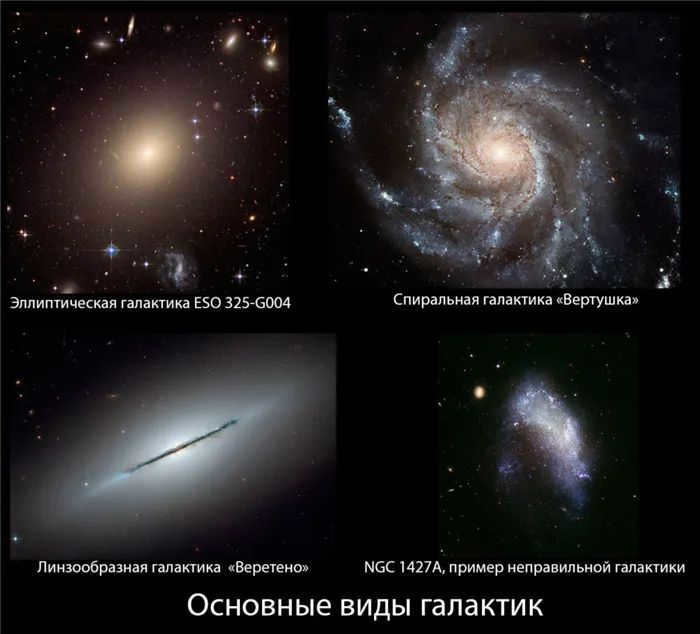
- Elliptical galaxies do not have a disk component or have very little contrast.
- Spiral galaxies have spiral branches and are sometimes seen as rings.
- Lens-shaped galaxies are similar to spiral galaxies, but they lack a distinct spiral arm. They have a small percentage of interstellar gas, resulting in a low rate of new star formation.
- Irregular galaxies have a wispy and tattered structure. They contain up to 50% interstellar gas.
Collisions between galaxies are quite common in the universe. It is believed that our own galaxy experienced a collision event approximately 2 billion years ago. Due to the vast distances between objects, only a few stars actually come into direct contact during these collisions. The collision process itself can vary depending on the different speeds of the galaxies involved, often resulting in a merger or a passing through each other.
There are two main theories regarding the origin of galaxies.
- The formation of galaxies from smaller objects. Initially, regions of uneven matter with a mass of around 1 million times that of our sun formed. Over time, these regions merged and formed larger structures, eventually gaining the mass of hundreds of billions of stars. Subsequently, these galaxies came together to form groups and clusters.
- Creation through the aggregation of massive entities. Following the monumental event known as the Big Bang, the expanse of space underwent a remarkable expansion, resulting in the stretching and formation of immense celestial bodies. These colossal formations eventually condensed into dense sheets of matter, ultimately giving birth to the magnificent globular clusters that exist today.
The Pleiades cluster, the Yaïds, the Hercules globular cluster, and the Alpha Perseus cluster are some of the most well-known groups of stars that can be seen without the aid of a telescope.
Is a galaxy bigger than the universe?
It’s important to note that our galaxy is not the only one in the vast expanse of the universe. Astronomers have discovered over 100 other galaxies, some of which are relatively close to Earth and can be seen with the naked eye, like the galaxy in the constellation Veronica’s Hair. Others can only be observed using powerful telescopes in observatories, while some can only be seen from space stations where the atmosphere doesn’t obstruct the view of space.
Scientists believe that the universe is boundless and harbors an endless amount of galaxies. A few of them were birthed from luminous gas and dust clouds, while others resemble our own galaxy, and some have depleted their energy and vanished. Currently, there is no unified theory that elucidates the genesis of the Universe and the creation of stars and galaxies within it. It is possible that humanity will acquire this knowledge in the distant future, but for now, we can merely speculate and generate imaginative conjectures.
The Galaxy of the Milky Way
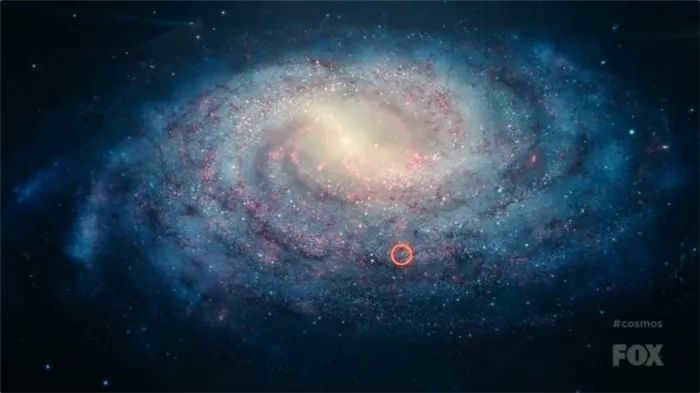
Detection and identification
The identification of our galaxy is quite fascinating, as its cloudy formations bear a striking resemblance to the Milky Way. Its name has deep historical origins and originates from the Latin term “Via Lactea”. Its mention can already be found in Naseerad-Dintusi’s Tadhir, where it is described as being comprised of a multitude of compact stars that are closely packed together, resembling spots. These stars have a milky hue… 1.
Initially, scientists hypothesized that the galaxy was teeming with stars, but it was not until 1610 that this assumption was confirmed. It was then that Galileo Galilei directed the first telescope towards the heavens and observed individual stars. This revelation also unveiled a new reality to mankind: there are significantly more stars than previously believed, and they all belong to our galaxy.
In 1755, Immanuel Kant postulated that the Milky Way is a conglomeration of stars bound together by gravity. The force of gravity causes celestial objects to rotate, flatten, and coalesce into disk-like structures. However, in 1785, William Herschel attempted to reconstruct the true shape of our galaxy, unaware that a significant portion of it was obscured by a veil of interstellar dust and gas.
It was not until the 1920s that our understanding of the Milky Way underwent a paradigm shift. Edwin Hubble provided compelling evidence to suggest that what we perceive as the Milky Way are actually individual galaxies, rather than singular spiral formations. This revelation allowed for a greater comprehension of our own galactic structure. It is now widely accepted that the Milky Way is a spiral galaxy with intersecting arms.
Location
The clusters of stars are easily identifiable due to the wide, elongated bright streaks resembling the Milky Way. It is worth noting that this group has been observable since the formation of planets, serving as the central hub of the galaxy.
Spanning a diameter of 100,000 light-years, the galaxy showcases a distinctive central bulge, giving rise to four prominent spiral arms when viewed from above. This particular type of galaxy constitutes two-thirds of all galaxies in the entire Universe.
In contrast to typical spiral galaxies, our galaxy features a central bar with two branching arms. The major arms are accompanied by two minor arms. Our solar system resides in the Orion arm. As the galaxy is in constant rotation, it exerts gravitational pull on all celestial bodies within its reach. Our solar system is currently traveling at a velocity of 828,000 kilometers per hour. However, due to the galaxy’s immense size, it takes a staggering 230 million years to complete a single revolution.
The accumulation of dust and gas within the spiral arms creates optimal conditions for the formation of new stars. These arms extend from the galactic disk, which spans an area of approximately 1,000 light-years. In the midst of this, there is a bulge that contains a dense concentration of dust, stars, and gas. As a result, only a small portion of the galaxy’s total number of stars is visible due to the obstructing presence of a thick fog composed of gas and dust.
Located at the core of the galaxy is an immensely large black hole that is billions of times larger than the Sun. It is possible that this black hole was once smaller in size, but it has grown through a consistent consumption of dust and gas. This black hole exhibits an insatiable appetite, occasionally even devouring stars. Although it cannot be directly observed, its presence is detectable through the gravitational effects it produces.
Around our galaxy, there exists a ring of heated gas housing ancient stars and globular clusters. This expansive region spans across hundreds of thousands of light years, yet it comprises a mere 2% of the total number of stars found in the galactic disk. It is important to note that the majority of our galaxy’s mass, a staggering 90%, is composed of mysterious dark matter.
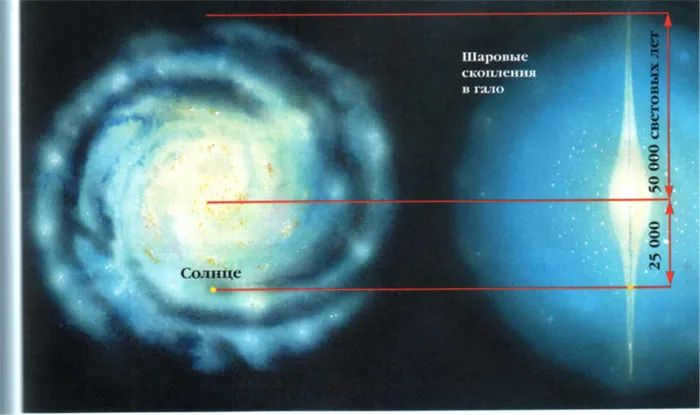
Latest findings
A group of American astrophysicists has conducted a study to ascertain the abundance of miniature black holes within the Milky Way, spanning from a few solar masses to several hundred solar masses. Their calculations indicate that there are approximately 100 million of these black holes existing in our galaxy, a significantly higher number than previously anticipated. Consequently, this suggests that the closest black holes may be situated in close proximity to our solar system. The results of this research have been published in the esteemed journal, Monthly Notices of the Royal Astronomical Society.
The scientists analyzed the distribution of visible stars observed through astronomy. By tallying the quantity of stars that exceed the Sun’s mass and eventually collapse into black holes during their life cycle, the researchers discovered that these occurrences are infrequent but more prevalent than previously believed. Numerous stars contribute to this phenomenon. It is estimated that there are approximately 100 million stellar black holes within our galaxy, excluding black holes of intermediate mass and supermassive black holes, which were not the focus of this study.
The astronomers also observe that in our galaxy, stellar black holes have a tendency to be relatively small, typically less than 30 solar masses. However, in the dwarf galaxies that surround us, the average mass of stellar black holes is closer to 100 solar masses. This difference can be attributed to the scarcity of heavy elements in dwarf galaxies. Without an abundance of heavy elements, bright stars in dwarf galaxies do not produce a significant amount of stellar wind, which refers to the stream of charged particles expelled by a star. As a result, the massive stars in dwarf galaxies retain most of their mass throughout their life cycle, eventually leading to the formation of a substantial black hole.
Moreover, an illustrative instance of a galaxy exhibiting polarization is the Centaurus A lensing system, specifically cataloged as NGC 5128 in the COSMIC catalog. This particular galaxy is known for its intense emission and is regarded as one of the most radioactive.
Various Kinds of Galaxies
Spiral Galaxies
A spiral galaxy, such as our own, is a flat disk with a bulging center that is aligned with the spiral arms. The disk contains a mix of stars, planets, dust, and gas that orbit around the central region. Due to velocities reaching up to 100 km/s, the material within the disk takes on a spiral shape. Some of these spirals form unique patterns that are given distinctive names (for example, the Sombrero Galaxy).
Older stars are located closer to the bulging center, while new stars form within the spiral system. The disks of these galaxies are encompassed by illuminated, enigmatic dark matter.
To find out more about spiral galaxies, refer to our comprehensive article.
Jumper galaxies
Spiral galaxies characterized by the presence of vast, luminous stars and scattered matter in their centers are known as “jumper galaxies.” These galaxies often lack intelligent life forms, making them a fascinating subject of study for astronomers who seek to unravel their role within the larger galaxy. Some jumper galaxies may even harbor supermassive black holes. They can be further classified into subgroups based on their viscosity, spiral structure, and density.
Additionally, there is a distinct article dedicated to spiral branch galaxies.
Spiral galaxies combined with the Messier catalog
Galaxies of an elliptical shape
Ellipticals refer to galaxies that have an elliptical shape. They typically have a round appearance but are slightly elongated along their axis, resembling a cigar shape. This category of galaxies consists mainly of old stars, numbering in the trillions, but lacks any significant amount of dust or other interstellar materials. The stars within elliptical galaxies are concentrated towards the center and move in random directions. The formation of new celestial objects within this type is relatively rare.
One notable example of an elliptical galaxy is the giant elliptical galaxy, which can span up to two million light-years in diameter. However, there are also smaller versions of these galaxies known as dwarf elliptical galaxies.
For further information on elliptical galaxies, please refer to our dedicated article.
Elliptical galaxies in the Messier catalog
Irregular galaxies
Irregular galaxies are those that do not fit into the first two categories. They can take on distorted shapes or lack a defined form due to interactions with other objects.
Learn more about irregular galaxies in our featured article.
Notable irregular galaxies
Irregular galaxies from the Messier catalog
A compilation of less well-known galaxies:
Galactic clusters
Galaxies can be found individually or in pairs. However, more commonly, they are part of larger formations known as groups, clusters, or superunits. These structures interact and merge, giving rise to distinct galaxies. This process leads to the expulsion of gas towards the galactic core, triggering the formation of new stars.
It is believed that our own galaxy will eventually merge with the Andromeda galaxy, which is located two million light years away and has been observed in the northern hemisphere. These events represent different stages of evolution, as irregularities gradually transform into a singular shape and spirals evolve into elliptical galaxies.





